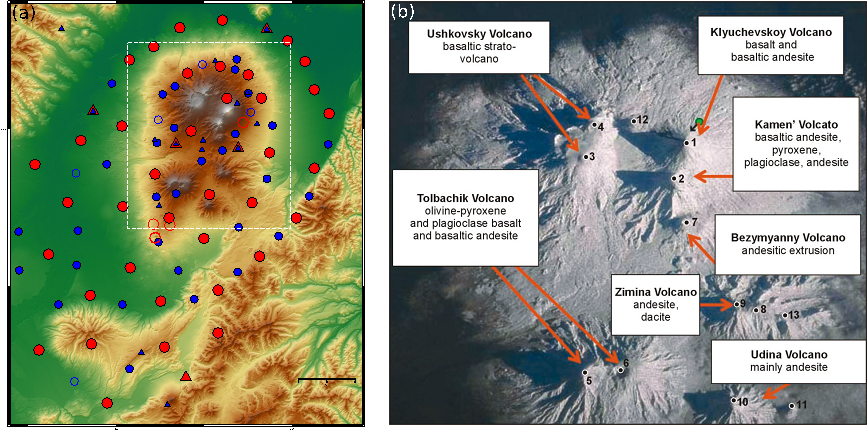Fellowship Project, Seismic Structure of the Klyuchevskoy Volcanic System
Alexander von Humboldt Research Fellowship
The Klyuchevskoy volcanic group (KVG) is a cluster of 13 closely spaced stratovolcanoes, situated at the northern end of the Kamchatka volcanic arc, where it coincides with the Aleutian Arc. Klyuchevskoy volcano at its centre is one of the most active in the world, erupting on average 1 cubic metre of rock per second over the last 10000 years. Many international flight routes cross the Kamchatka peninsula, where eruptions from volcanoes of this group occasionally fill the air with ash. Between August 2015 and July 2016 an international collaboration conducted the KISS experiment, a temporary network of 83 seismographs, to investigate what drives the unusually high volcanic activity here. Data from the temporary stations, combined with a permanent monitoring network, shall be used to investigate the seismic sources, velocity structure, and magmatic processes within the volcanic group. The KISS project aims to determine whether the underlying magma reservoirs are fed by a large interconnected volcanic supercomplex, and also offers the opportunity to examine the dynamic processes during an eruption cycle. The experiment recorded the full sequence of events that preceded the most recent eruption of Klyuchevskoy in April 2016. The fellowship project will specifically concentrate on Ambient Noise Tomography of the KVG, and seek to integrate the surface wave tomographic constraints with body wave and receiver function observations.
Time frame
- 2017 - 2019
Funding
- Alexander von Humboldt Stiftung
Host
- Chr. Sens-Schönfelder (GFZ Potsdam)
- F. Tilmann (GFZ Potsdam)
Fellow
- R. Green (GFZ Potsdam)
Partner
- Nikolai Shapiro (IPGP, Paris)
- Ivan Koulakov (IPGG, Novosibirsk)
- Evgeni Gordeev (IVS, Petropavlovsk-Kamchatsky)
- Danila Chebrov (KBGS, Petropavlovsk-Kamchatsky)
Project webpage


